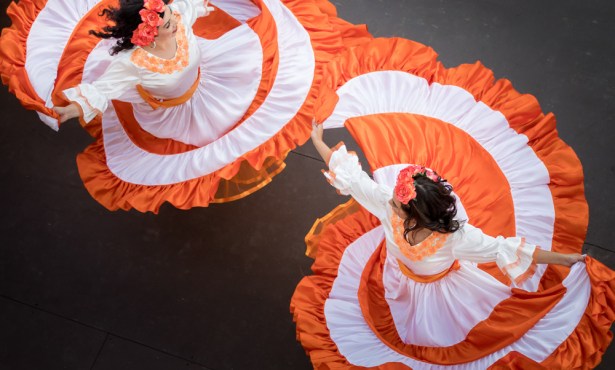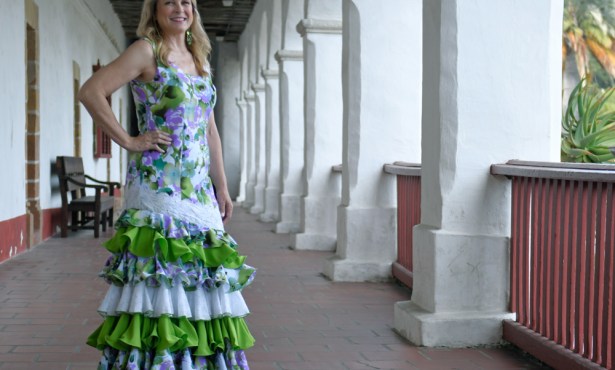Hanging with Barney at the Mercado
An Introduction to Fiesta
Barney does not mess around when it comes to Fiesta. After approaching about three false Barney Brantinghams across De la Guerra plaza, I finally find the real Barney decked out in Spanish colonial gear. He looks dapper in slacks, straw hat, and red sash. He is like something out of Zorro, although in lieu of a sword at his side, he’s got a pen and fork in his shirt pocket. I, utensil-less and in neutral tones, am clearly not the belle of this ball.
I am lucky enough to have Barney as my guide through my first Fiesta. He maneuvers himself amongst the crowd like the local celebrity he is, but most importantly, he knows where the good stuff is. He dares me to try goat; a goat taco, more specifically. It looks a little friendlier than I expect it to, and despite my initial guilt, it’s delicious. We don’t linger on the goat for long, and over the course of our outing we have horchata, carnitas, arroz con pollo, and, my favorite, churros. It’s a lot of meat, cinnamon, and tortillas to handle over the course of one lunch, but hey, Fiesta only comes once a year.
As noon approaches and the plaza gets more packed, Barney chats in Spanish with local vendors. At one point he turns to me and says, “You know Spanish, right?” No, I confess. Although learning Spanish may have been the socially responsible and downright rational thing to do, I took up everybody’s favorite dead language, Latin. If I ever find myself face to face with Caesar himself, I am in luck, but until then I am left to flounder at Fiesta. Barney, of course, does not flounder at Fiesta.
He was stationed in Panama in the 1950s because, as he puts it, “Uncle Sam decided I needed a trip.” His time there over half a century ago has left an impression on him. He informs me that his hat with the striped ribbon around it is Panamanian style. He left Panama with a love for arroz con pollo, a dish he said they never get right in America. He approves a Fiesta version of the dish, but still insists that it still isn’t like Panama.
Barney and Sue, his partner, have each been in Santa Barbara since the early ’60s, and have seen Fiesta’s transformations over the years. A medley of food, performance, and cascarones (confetti-filled eggs), Fiesta is a raucous but entirely family-friendly affair. However, Sue, who is also appropriately dressed in old Spanish garb, assures me this was not always the case. She recalls a wilder, drunker time when Fiesta was not necessarily for Mom, Pop, the kids, and the golden retriever. It was bigger then, she says, and more fun. She says the big change came with the ban on alcohol during Fiesta except in bars. She dates that tentatively to sometime in the 1990s.
Sanitized as it may be, Fiesta is alive and kicking. Santa Barbarans of all creeds and from all walks of life come together to celebrate the city’s rich Spanish heritage. It is the grand dame of festivals in a city that cannot seem to get enough of them. Fiesta’s appeal to locals and outsiders alike is no mystery, but I am still left with two questions: How do they get all of that confetti out of the pavement by the morning after, and where can I find horchata that good when I head back to the Midwest this fall?



